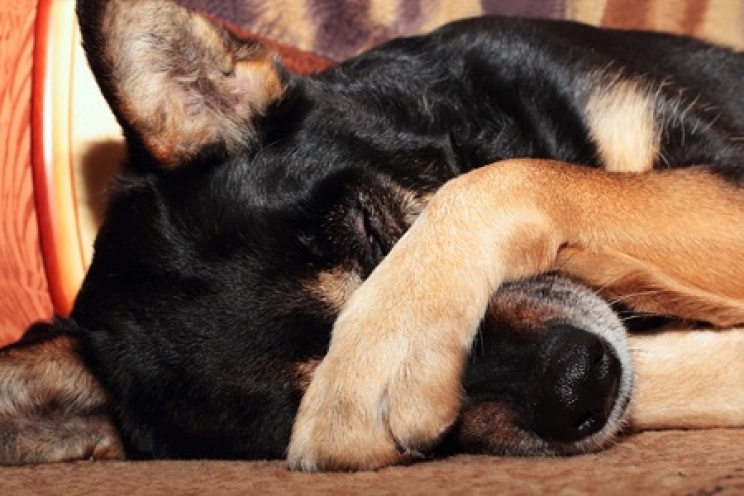Among the most frequent problems that can occur in our animals, we certainly find dental problems at the top of the list. Dogs and cats refuse to eat due to toothache and many owners often fail to recognize and deal with this problem in the right way. Let's try to understand what are the main dental problems in dogs and cats, and what to do when they have toothache.
Causes of toothache
When our pets experience pain in the mouth, they often refuse to eat, despite still being very hungry. This behaviour can indicate the presence of many different disorders, which can affect not only the teeth but also the tongue, gums and palate.
In this article, we will only talk about problems related to the teeth of dogs and cats, certainly among the most frequent reasons why owners call vets for help.
Those of us who have had cavities at least once in our lives will surely know what it means to have a toothache. The pain can sometimes be so strong that it affects our mood and our daily activities. Anyone who thinks differently is wrong. In fact, they too can feel pain, and toothache is certainly one of the most recurrent events.
The main causes for which toothache may appear include above all:
- Poor oral hygiene;
- Diet lacking or lacking in dry food;
- Excess of sweets and "sugary" foods in the diet;
- Choice of poor quality food;
- Ingestion of bones;
- Lack of nibbling toys.

All these factors negatively affect the health of the teeth. In fact, every time we eat, the surface of our teeth and gums is covered with food residues.
If proper oral hygiene is not followed, both for us and for our animals, these residues accumulate more and more on the teeth, becoming the nourishment for bacteria, which are normally present in the mouth.
In a short time, the food residues, mixed with the substances produced by the bacteria, are transformed into plaque. This is that whitish, rough patina that forms around the teeth when they are not brushed properly and consistently.
In the long run, the plaque hardens and accumulates more and more, forming tartar, which is harder, more resistant, yellow-brown in color and very difficult to remove. In this case, in fact, the intervention by the veterinarian becomes essential.
Plaque, but especially tartar, can be easily seen in our animals. Lifting the lip, in fact, you can see a patina that begins on the edge of the gum and grows towards the tip of the teeth. The greatest risk linked to the presence of tartar mainly concerns the increase of bacteria that adheres the tooth. Over time, the tooth can become so covered by these substances, that the it begins to corrode, creating cavities.
The consequences of the presence of tartar include above all:
- Halitosis;
- Tooth decay;
- Gingivitis, inflammation of the gum;
- Bacterial infections of the gums;
- Abscesses, collections of pus in the gum;
- Spread of bacteria to the heart.
Symptoms of dental problems
The presence of dental problems can manifest itself with a number of symptoms, including:
- Bad breath;
- Ache;
- Refusing to eat;
- Constant hunger;
- The animal moves away if you touch its face;
- Sudden bleeding from the gums;
- Red edge of the gums;
- Increased salivation;
- Teeth moving as if they were about to fall off;
- Loss of teeth.
What should I do in case of toothache?
Prevention is very important in case of dental problems, but if the situation has already crossed the line, you will need to rely on your veterinarian. Tartar, in fact, cant be easily removed with a toothbrush, especially if there is already a severe inflammation.
The vet will remove it with a scaling operation, during which he will break the calculus of tartar with a special tool, and then aspirate them. The operation must be performed under general anaesthesia, to prevent the animal from feeling pain and to have safe access to the teeth.
If the situation is serious, and the tartar has been able to accumulate for a long time, bleeding from the gums may occur during the surgery, and some teeth may start to swing, once "freed" from the tartar.
Then the teeth are polished and the gums checked.
If you have bacterial infections, your vet may recommend antibiotics and pain relievers.
How to prevent dental problems
To prevent the formation of plaque and tartar, you will need to apply important tips every day. Among these, we find above all:
- Integrate the sufficient quantity of kibble, which "scratch" the surface of the teeth, stimulating the removal of food and plaque;
- Provide the dog with buffalo bones for gnawing;
- Don't give him real bones;
- Do not offer him sweets and leftovers from your meal;
- Stimulate the animal to use chewable toys;
- Replace regular premium snacks with ones enriched with cleansing enzymes;
- Get the dog and cat used to having their teeth brushed with a toothbrush every day;
- Use oral sprays to clean and refresh the mouth;
- Proceed with harmless tooth cleaning sessions.
By following these practical tips, you will surely help your dog to have a clean and healthy mouth.










